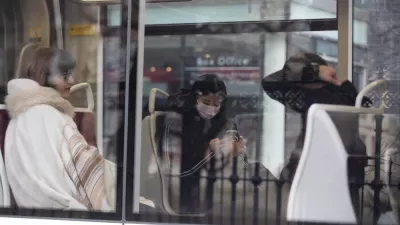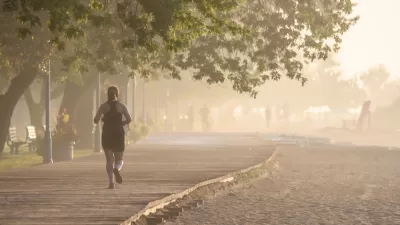The dividing lines in the cities of today are not so much about neighborhoods, but rather the relative health of those neighborhoods, according to this piece from The Globe and Mail.
"This is the new crisis of cities: Badly designed neighbourhoods are literally sapping people of their ability to live fully.
If, as a newly arrived immigrant, poverty has driven you to the inner or outer suburbs, where you live in a basement apartment or high above the concrete ground in a residential tower, you are far more likely to suffer from type 2 diabetes and its related consequences such as blindness and amputation. Most of Canada's growth comes from immigrants, but the troubling fact is that Hispanics, blacks and South Asians are genetically predisposed to diabetes. Because of the compounding of these forces, you and your neighbours can expect a lower life expectancy."
An accompanying infographic in this story maps out diabetes in Toronto, based on a 3-year study of the city's neighborhoods.
FULL STORY: Unhealthy neighbourhoods play big role in obesity, diabetes epidemic

Planetizen Federal Action Tracker
A weekly monitor of how Trump’s orders and actions are impacting planners and planning in America.

Restaurant Patios Were a Pandemic Win — Why Were They so Hard to Keep?
Social distancing requirements and changes in travel patterns prompted cities to pilot new uses for street and sidewalk space. Then it got complicated.

Maui's Vacation Rental Debate Turns Ugly
Verbal attacks, misinformation campaigns and fistfights plague a high-stakes debate to convert thousands of vacation rentals into long-term housing.

In California Battle of Housing vs. Environment, Housing Just Won
A new state law significantly limits the power of CEQA, an environmental review law that served as a powerful tool for blocking new development.

Boulder Eliminates Parking Minimums Citywide
Officials estimate the cost of building a single underground parking space at up to $100,000.

Orange County, Florida Adopts Largest US “Sprawl Repair” Code
The ‘Orange Code’ seeks to rectify decades of sprawl-inducing, car-oriented development.
Urban Design for Planners 1: Software Tools
This six-course series explores essential urban design concepts using open source software and equips planners with the tools they need to participate fully in the urban design process.
Planning for Universal Design
Learn the tools for implementing Universal Design in planning regulations.
Heyer Gruel & Associates PA
JM Goldson LLC
Custer County Colorado
City of Camden Redevelopment Agency
City of Astoria
Transportation Research & Education Center (TREC) at Portland State University
Camden Redevelopment Agency
City of Claremont
Municipality of Princeton (NJ)




























